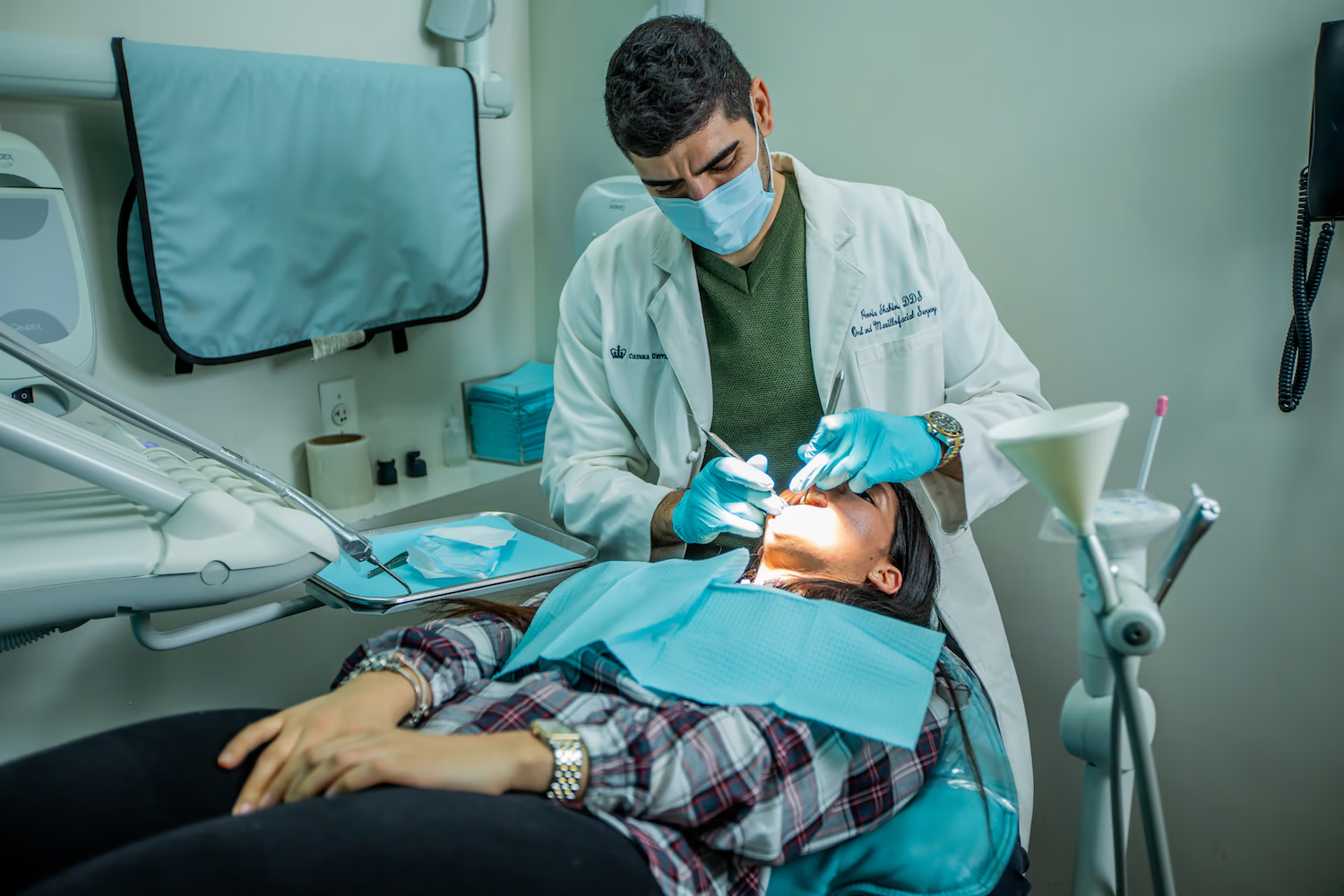Root Canalnear me

A root canal is needed when the nerve of a tooth is affected by decay or infection. In order to save the tooth, the pulp (the living tissue inside the tooth), nerves, bacteria, and any decay are removed and the resulting space is filled with special dental materials, which restore the tooth to its full function.
What does root canal therapy involve?
A root canal treatment requires one or more visits and can be performed by a Brooklyn dentist or endodontist (a root canal specialist).
While the tooth is anesthetized, a rubber dam (a sheet of rubber) will be placed around the tooth to keep it dry. An access opening is made on top of the tooth and a series of root canal files are placed into the opening, one at a time, removing the pulp, nerve tissue, and bacteria. If tooth decay is present, it will also be removed with special dental instruments.
Once the tooth is cleaned, it will be sealed with either a permanent filling or, if additional appointments are needed, a temporary filling will be placed.
At the next appointment, usually a week later, the roots and the inside cavity of the tooth will be filled and sealed with special dental materials. A filling will be placed to cover the opening on top of the tooth. In addition, all teeth that have root canal treatment should have a dental crown placed. This will protect the tooth and prevent it from breaking, and restore it to its full function.
After the root canal, your tooth may still be tender, but this will subside as the inflammation diminishes and the tooth has healed.
You will be given care instructions after each appointment. Good oral hygiene practices and regular dental visits will aid in the life of your root canal treatment.
At Brooklyn Dentist, we offer root canals in Brooklyn, NY for patients in Crown Heights, Fort Greene, Park Slope, Brooklyn Heights, and other areas.
